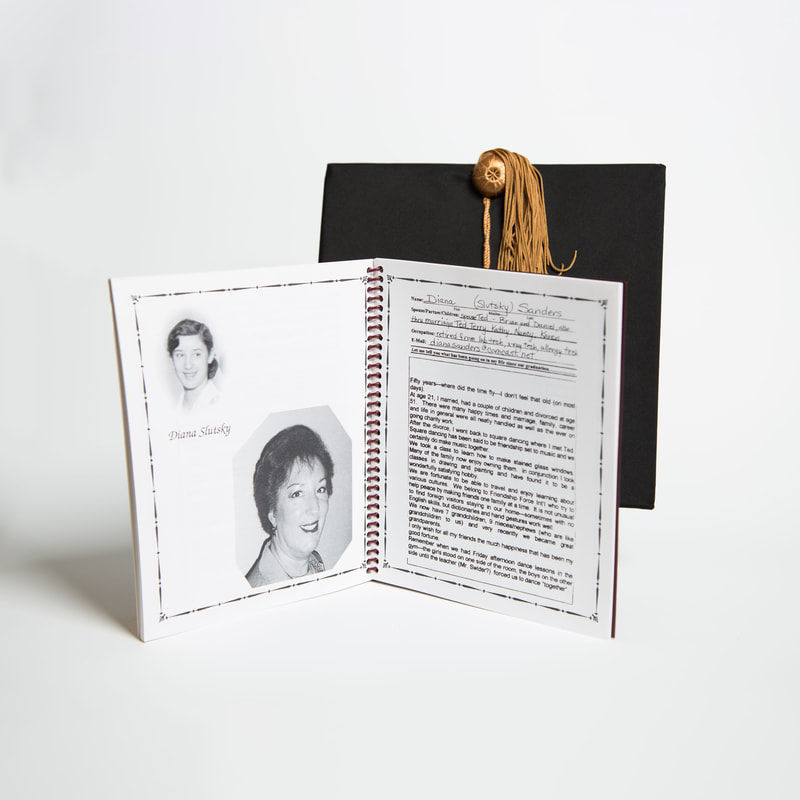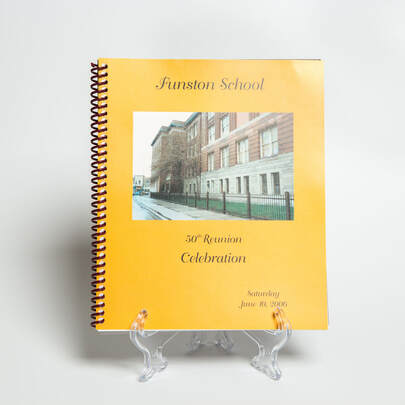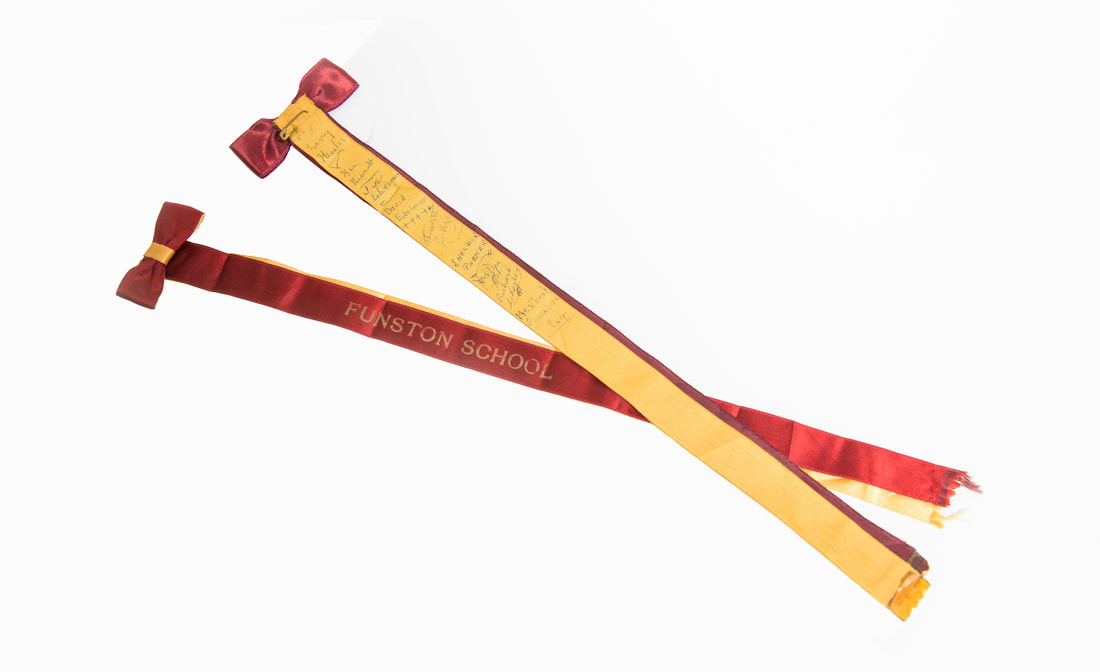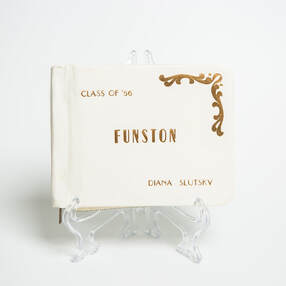SCHOOL MEMORABILIA - PART 2
Donation Details
From 1948 to 1956, Diana Slutsky Sanders attended Funston School, a K-8 school in Chicago, IL. She graduated from eighth grade in 1956. Fifty years later, after her classmates gathered for a reunion, Diane heard about the Museum of Teaching and Learning and she decided to donate to MOTAL her entire collection of annual class pictures, her graduation ribbons, her autograph book, plus the reunion booklet of biographies for classmates that detailed what they did and where they lived during those 50 years.
From 1948 to 1956, Diana Slutsky Sanders attended Funston School, a K-8 school in Chicago, IL. She graduated from eighth grade in 1956. Fifty years later, after her classmates gathered for a reunion, Diane heard about the Museum of Teaching and Learning and she decided to donate to MOTAL her entire collection of annual class pictures, her graduation ribbons, her autograph book, plus the reunion booklet of biographies for classmates that detailed what they did and where they lived during those 50 years.
|
Background
The use of graduation ribbons, stoles, and cords dates back to the 12th century. Stoles or “scarves of office” were used by medieval Catholic and Anglican priests to denote an individual’s assertion into the Roman administration. The stoles represent specific honors and rank within the clerical hierarchy, and were worn in conjunction with religious rites and ceremonies. Academic institutions, deeply interwoven with the religious institutions at the time, adopted the use of ceremonial regalia. Like caps and gowns, academic stoles were used in English and then American universities to denote specific honors and affiliations. |
Alumni reunions date back to academic institutions’ earliest years. The high school reunion has become a common trope in popular culture—through film, television, literature, and music, artists reflect upon the social and emotional significance of the tradition steeped in nostalgia and identity creation. In their 1996 study of high school reunions, Vered Vinitsky-Seroussi and Robert Zussman’s argue that reunions “are a critical vantage point from which to make sense of issues of identity in contemporary American.” The contemporary ubiquity of social media and networking has deeply effected the reunion tradition. “High school reunions used to take place ten years after you graduate, or twenty-five years after you graduate. Now, high school reunions take place every morning, while you sit at your computer not doing work, browsing your former classmates’ update statuses.”
Learn More!
If you would like to learn more about school memorabilia, we recommend the following:
If you would like to learn more about school memorabilia, we recommend the following:
- “How High School Reunions Connect Us With the Past: ” by Ellen C. Caldwell
https://daily.jstor.org/how-high-school-reunions-connect-us-with-the-past/




